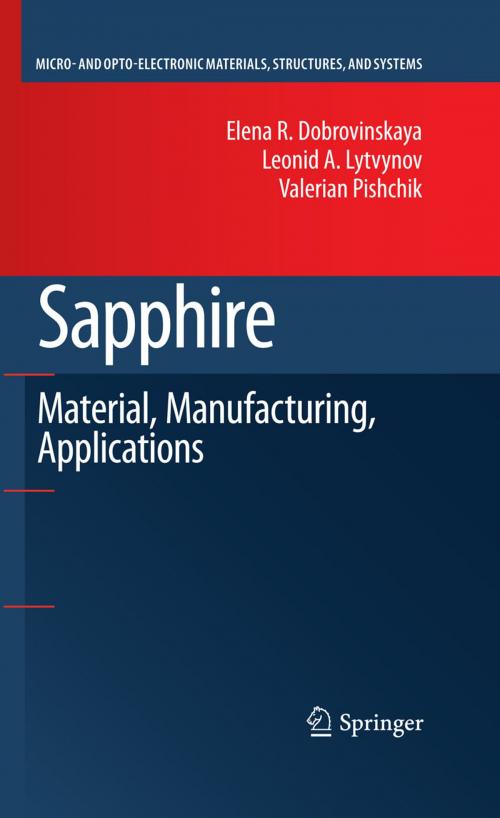Sapphire
Material, Manufacturing, Applications
Nonfiction, Science & Nature, Technology, Material Science, Electronics| Author: | Elena R. Dobrovinskaya, Leonid A. Lytvynov, Valerian Pishchik | ISBN: | 9780387856957 |
| Publisher: | Springer US | Publication: | April 21, 2009 |
| Imprint: | Springer | Language: | English |
| Author: | Elena R. Dobrovinskaya, Leonid A. Lytvynov, Valerian Pishchik |
| ISBN: | 9780387856957 |
| Publisher: | Springer US |
| Publication: | April 21, 2009 |
| Imprint: | Springer |
| Language: | English |
By the second half of the twentieth century, a new branch of materials science had come into being — crystalline materials research. Its appearance is linked to the emergence of advanced technologies primarily based on single crystals (bulk crystals and films). At the turn of the last century, the impending onset of the “ceramic era” was forecasted. It was believed that ceramics would play a role comparable to that of the Stone or Bronze Ages in the history of civilization. Naturally, such an assumption was hypothetical, but it showed that ceramic materials had evoked keen interest among researchers. Although sapphire traditionally has been considered a gem, it has developed into a material typical of the “ceramic era.” Widening the field of sapphire application necessitated essential improvement of its homogeneity and working characteristics and extension of the range of sapphire products, especially those with stipulated properties including a preset structural defect distribution. In the early 1980s, successful attainment of crystals with predetermined char- teristics was attributed to proper choice of the growth method. At present, in view of the fact that the requirements for crystalline products have become more str- gent, such an approach tends to be insufficient. It is clear that one must take into account the physical–chemical processes that take place during the formation of the real crystal structure, i.e., the growth mechanisms and the nature and causes of crystal imperfections.
By the second half of the twentieth century, a new branch of materials science had come into being — crystalline materials research. Its appearance is linked to the emergence of advanced technologies primarily based on single crystals (bulk crystals and films). At the turn of the last century, the impending onset of the “ceramic era” was forecasted. It was believed that ceramics would play a role comparable to that of the Stone or Bronze Ages in the history of civilization. Naturally, such an assumption was hypothetical, but it showed that ceramic materials had evoked keen interest among researchers. Although sapphire traditionally has been considered a gem, it has developed into a material typical of the “ceramic era.” Widening the field of sapphire application necessitated essential improvement of its homogeneity and working characteristics and extension of the range of sapphire products, especially those with stipulated properties including a preset structural defect distribution. In the early 1980s, successful attainment of crystals with predetermined char- teristics was attributed to proper choice of the growth method. At present, in view of the fact that the requirements for crystalline products have become more str- gent, such an approach tends to be insufficient. It is clear that one must take into account the physical–chemical processes that take place during the formation of the real crystal structure, i.e., the growth mechanisms and the nature and causes of crystal imperfections.















